I’ve spent the rest of these posts complaining that the diagrams of who plays with who when England score and concede make little sense.
Following the third place play-off match they have started to make more sense. I think it’s because it was the 4th match were Steve Borthwick was able to play his preferred team (built around his preferred fly-half and captain Owen Farrell) vs the three where he couldn’t due to Farrell’s suspension.
The “who scored”, and “when did they score” charts have always made sense.

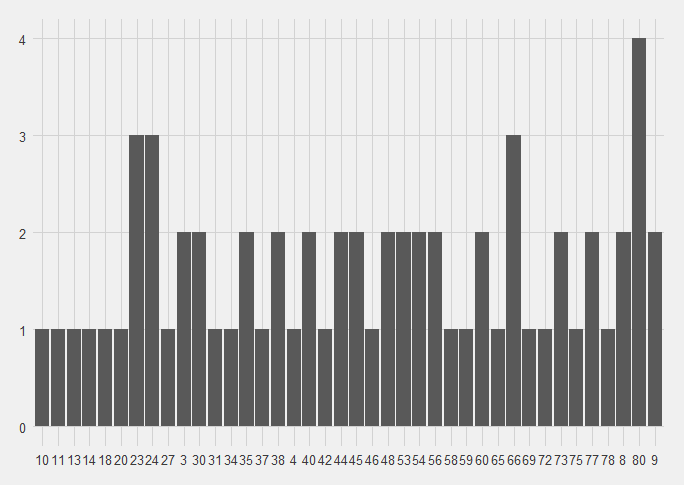
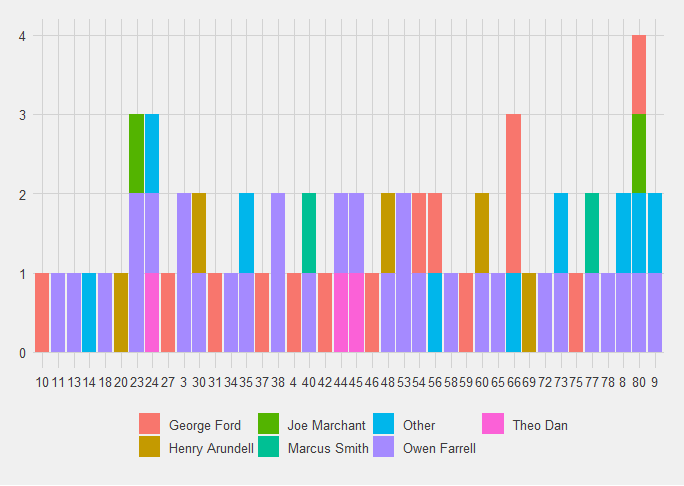
Of the 65 point-scoring moments for England, Ben Earl was present for the most (51/65), followed by Joe Marchant, Owen Farrell and Maro Itoje.
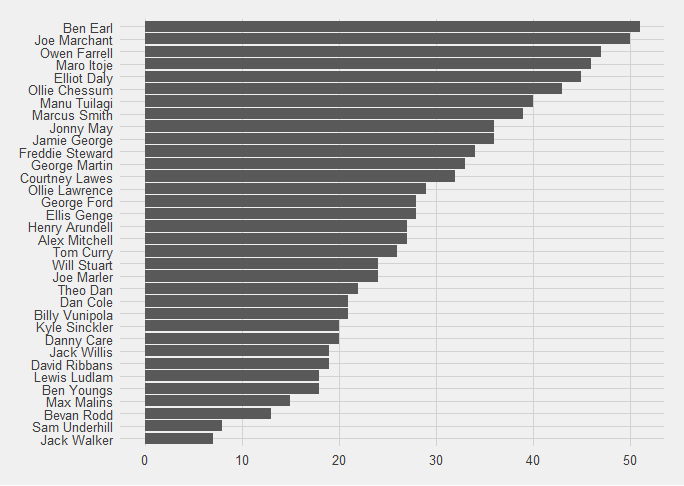
Jack Walker and Sam Underhill were present for the least (7 and 8 respectively), which makes sense because they only took part in 1 game each. Bevan Rodd was present for 13 over 2 games.
The dendrogram makes it clear how mix-and-matchy the squads put out were:
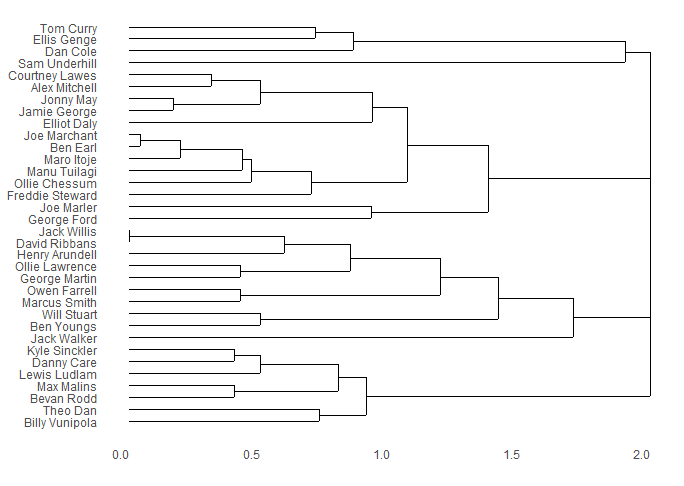
But the matrix network diagram now clearly shows who the “chosen 15” were, followed by the “sometimes” played and then, palest in the top left, the “I’m only playing you because I have to”.
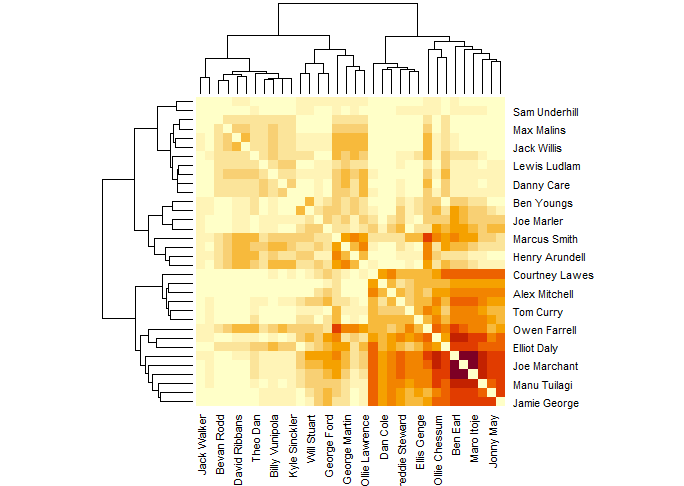
(I’m being slightly mean to Steve Borthwick there, it’s clear that he would have played Theo Dan only he’s an excellent future replacement for Jamie George when he retires, but Jamie George is still there)
The network diagram is less clear, with a general mush with Underhill, Walker and Rodd the outliers.

England played Argentina twice in this tournament, so I’ve labelled the 3rd place play-off team “Argentina2”. (England rugby league have done this to me before, so I was prepared.)
This Argentina team scored the joint most points against England at this tournament.
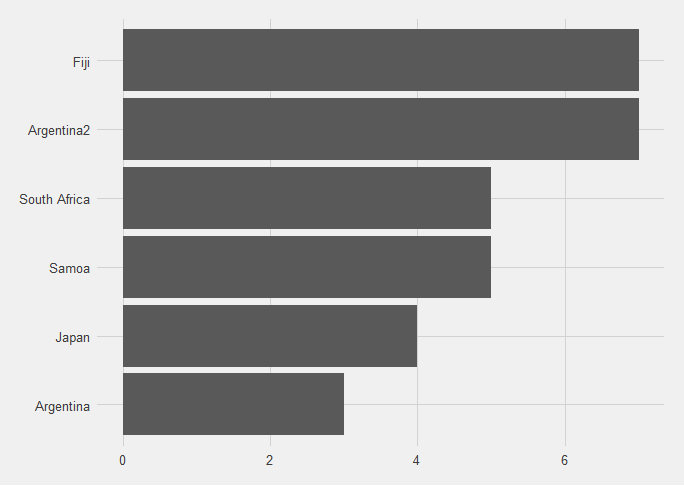
The pattern have of England conceding in minute 20-30 and 60-70 remained.
(Two more charts, one with when England conceded, and then that chart coloured by which team scored against England)
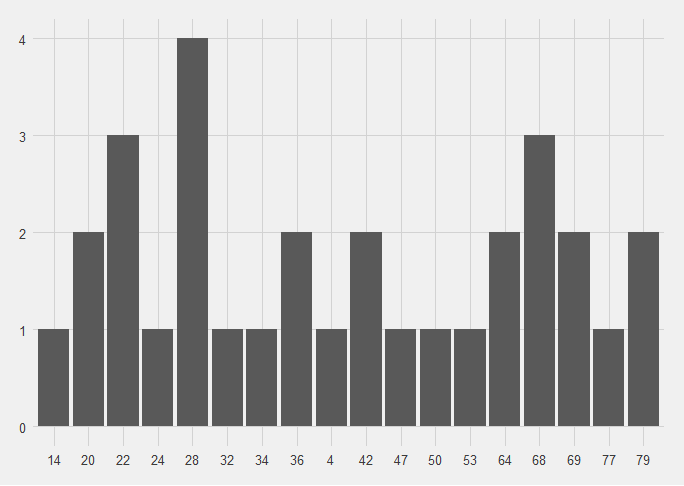
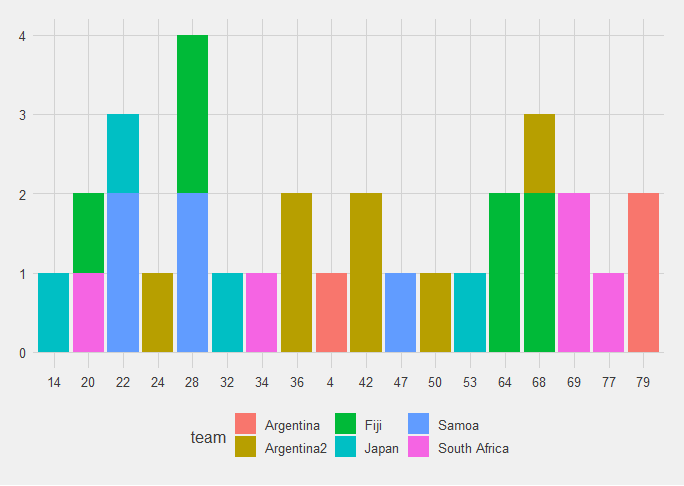
Maro Itoje, Ben Earl and Joe Marchant were on the pitch for the most point-concession moments, but they were on the pitch a lot.
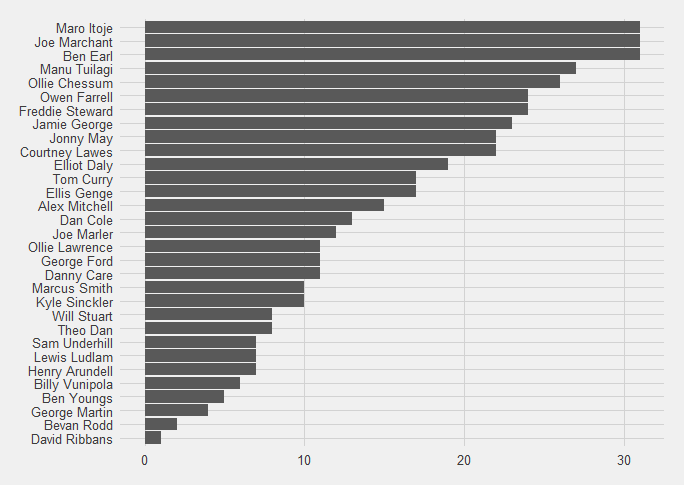
They were on for 31/31 point-conceding moments. David Ribbans, Bevan Rodd and George Martin (no, not that one) were present for the least, present for 1,2 and 4 point-conceding moments respectively.
The dendrogram and the matrix for point-concessions are less clear.
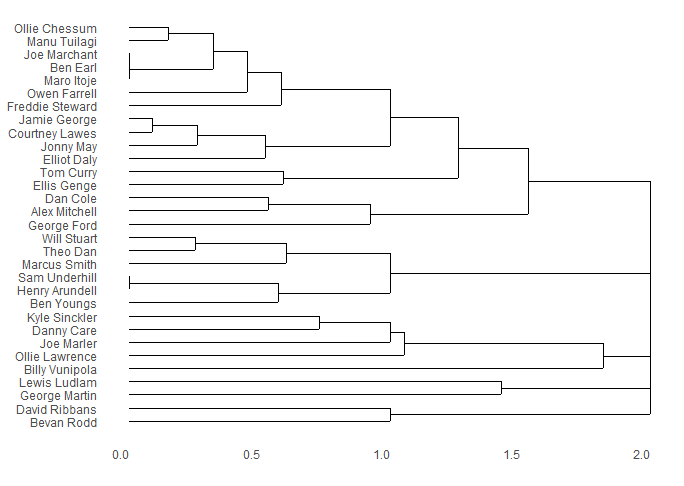
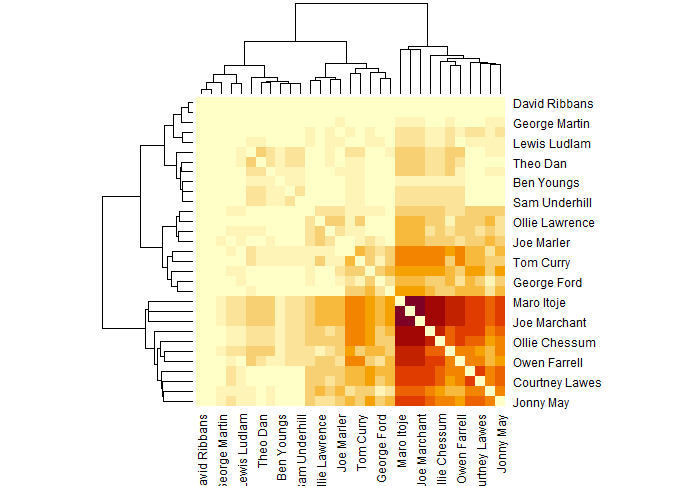
But the network diagram is fascinating, with the central 12 players giving a good idea of who Borthwick’s chosen are (Elliot Daly, Jonny May, Ollie Chessum, Jamie George, Joe Marchant, Maro Itoje, Courtney Lawes, Owen Farrell, Ben Earl, Freddie Stewart, Manu Tuilagi and Tom Curry).
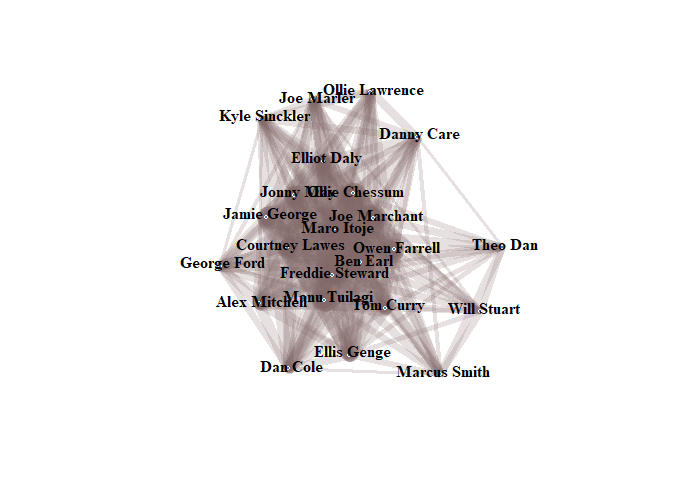
I hope you’ve enjoyed reading these as much as I have making them.
One thought on “The road to explicableness – A closer look at England after their seventh World Cup game”